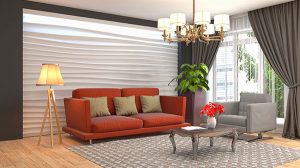A Guide To Designing Your Own Furniture

It can be very rewarding to design your own furniture. You get to create unique pieces that fit your style, perfectly in your home, and meet your needs. This comprehensive guide is for anyone who wants to learn how to design and create their own furniture, whether they are a beginner or an expert DIYer.
1. Planning and Inspiration
Take some time to collect inspiration and set your goals before you begin the design process.
- Determine Your Needs: Which type of furniture are you looking for? What type of furniture do you need?
- Style preferences: Consider your overall home style. Do you like modern minimalist designs or more traditional and rustic aesthetics?
- Space considerations: Measure where the furniture is going to be placed. Notify any restrictions or special requirements such as fitting in a corner, or matching the existing decor.
- Material Options: Consider the materials that you would like to use. You can choose wood for its durability and versatility, but other materials like metal, glass or recycled materials will give you a unique appearance.
2. Design Development
It’s time to get started with your design.
- Brainstorming and Sketching: Start with rough sketches in order to visualize your ideas. Try out different shapes, sizes, and configurations.
- Drawings in Detail: Use design software or more detailed drawings to improve your ideas. Attention should be paid to the proportions, joinery, and functional elements.
- Prototyping: Build a small prototype or mock-up before you commit to the final product. This will allow you to test your design and make any necessary adjustments.
3. Materials and Tools
Understanding the materials and equipment needed for a successful construction is essential:
- Choosing Quality Materials: Pick high-quality materials in line with your design requirements and functional needs. Consider repurposing or researching suppliers for a more sustainable approach.
- Essential Woodworking Tools: Stock up on basic woodworking tools like saws, drills and sanders. You may require specialized tools, such as routers or joinery.
4. Construction Techniques
Mastering basic construction techniques will ensure that your furniture is sturdy and visually pleasing.
- Joinery Techniques: Learn about various joinery methods such as pocket hole joinery, dovetail joints or mortise-and-tenon joints. Each method has different advantages in terms of durability, aesthetics and cost.
- Assembly & Finishing: Use a systematic assembly approach, making sure that all components are matched up perfectly. The durability and appearance of your piece will be improved by sanding, staining or painting it.
5. Safety and Maintenance
Plan for long-term maintenance and prioritize safety during the construction process.
- Workplace Safety: Wear protective gear, such as gloves and goggles, when handling tools and other materials. To prevent accidents, keep your workspace organized and well-ventilated.
- Maintenance Tip: Give guidance on how to care for finished furniture such as cleaning techniques and periodic inspections of wear and tear.
6. Personalization and Customization
Customization is one of the biggest advantages of creating your own furniture.
- Custom Features Add personalized features such as hidden compartments or adjustable shelves, to meet your specific needs.
- Decorative Element: Try out decorative techniques such as carving, inlay, or metal accents. They will add personality and character to your piece.
7. Environmental Considerations
Encourage the use of sustainable furniture designs and construction.
- Material Source: Choose materials that are sustainably sourced or upcycle existing furniture or wood waste.
- Durability: Design your furniture to be durable in order to minimize the need for replacements, and reduce environmental impact.
8. Share and Showcase Your Work
Share your work with others to celebrate your success.
- Documentation: Documentation is the process of documenting your design and sharing it on blogs, social media or DIY forums. This will inspire and educate other people.
- Feedback and iteration: Welcoming feedback from others and refining future designs.
The conclusion of the article is:
It is an adventure that blends creativity, craftmanship, and practicality. This guide will give you the confidence and knowledge to start your own furniture-design projects. Each piece of furniture you design tells a unique story, and reflects your love for design and craftsmanship. Enjoy the process and let your creative side flourish as you bring furniture designs to life.
Furniture creation is more than just functionality. It’s also about expressing yourself and adding to the beauty and utility in your home. The satisfaction you get from seeing your idea come to life, whether it’s a simple wardrobe or a coffee table, is unmatched. Gather your tools and unleash your creativity to start creating your own furniture.






